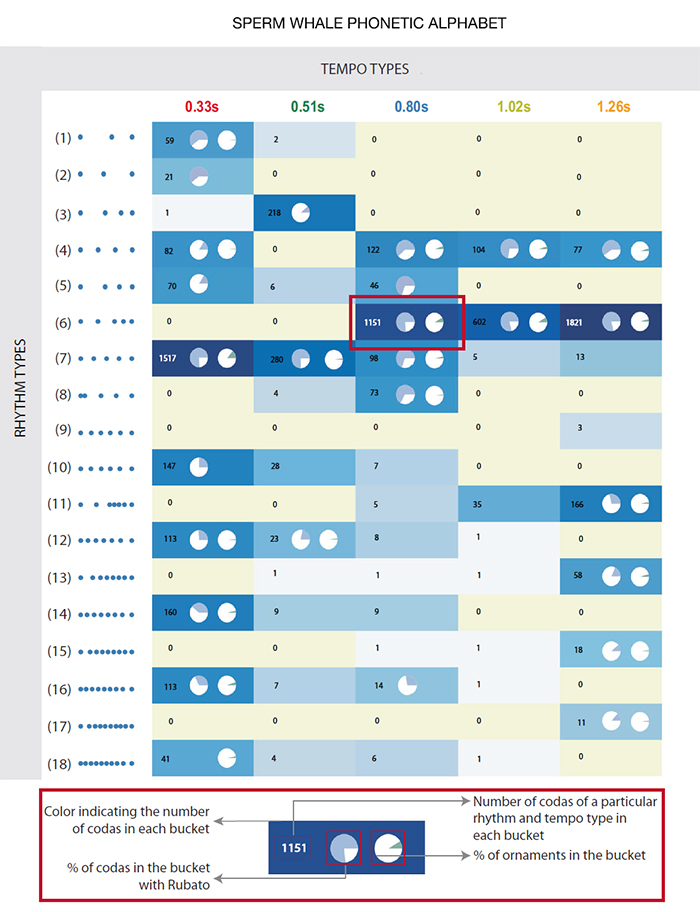
A recent analysis of a sperm whale’s vocalizations suggests variations in ‘clicks’ represent a kind of alphabet that forms the basis of a complex communication system.
Members of the conservation initiative Project CETI discovered series of clicks less than 2 seconds in length act as codas – basic units (phonemes) of cetacean speech.
The highly social mammals have previously been heard identifying themselves with unique patterns of clicking, but this is the first time a combinatorial and context-dependent structure has been demonstrated.
“Sperm whale vocalizations are more expressive and structured than previously believed,” Massachusetts Institute of Technology (MIT) computer scientist Pratyusha Sharma and colleagues write in their paper.
The researchers analyzed vocalizations recorded from about 60 different sperm whales (Physeter macrocephalus) between 2005 to 2018. A total of 8,719 distinct codas were identified in the recordings, sorting into 21 distance types of coda defined by previous studies.
Whales either take turns to produce these codas or overlap their vocalizations with their conversation partners, creating patterns at the individual coda level, as well as the overall structure of a chorus.
Some qualities of the codas used by sperm whales are context-dependent. These are the rubato – a lengthening or shortening of codas that aren’t tied to the number of clicks – as well as extra clicks added to a base coda, known as ornamentation.
In contrast, patterns of rhythm and tempo don’t appear to follow specific contexts.
Together this small set of different coda features creates a large combination of distinguishable sounds, like phonemes in a human phonetic alphabet.

“Sizable combinatorial vocalization systems are exceedingly rare in nature; however, use by sperm whales shows that they are not uniquely human, and can arise from dramatically different physiological, ecological, and social pressures,” Sharma and colleagues explain in their paper.
Bees also have a combinatorial system of communications, but theirs is conveyed through dance rather than song. Their code combinations convey meaning such as direction and distance to a food source.
While this research only brings us to the door of decoding the meanings behind sperm whale clicks, Sharma and colleagues believe there is enough complexity in what they’ve found that it’s possible whales may have duality in their patterning.
This is what we humans do in our various languages, where context-dependent units, such as letters, are combined in different ways to build different units with new meanings – a tactic that greatly increases the complexity of communication.
Though animal behavior researchers are yet to confirm this language feature in any other animal, the sperm whale’s clicks just might be a contender.
“Our findings open up the possibility that sperm whale communication might provide our first example of that phenomenon in another species,” Sharma and colleagues conclude.
This research was published in Nature Communications.










